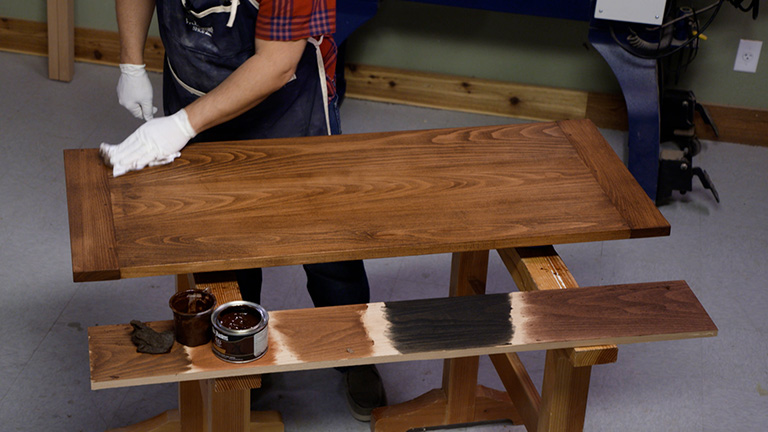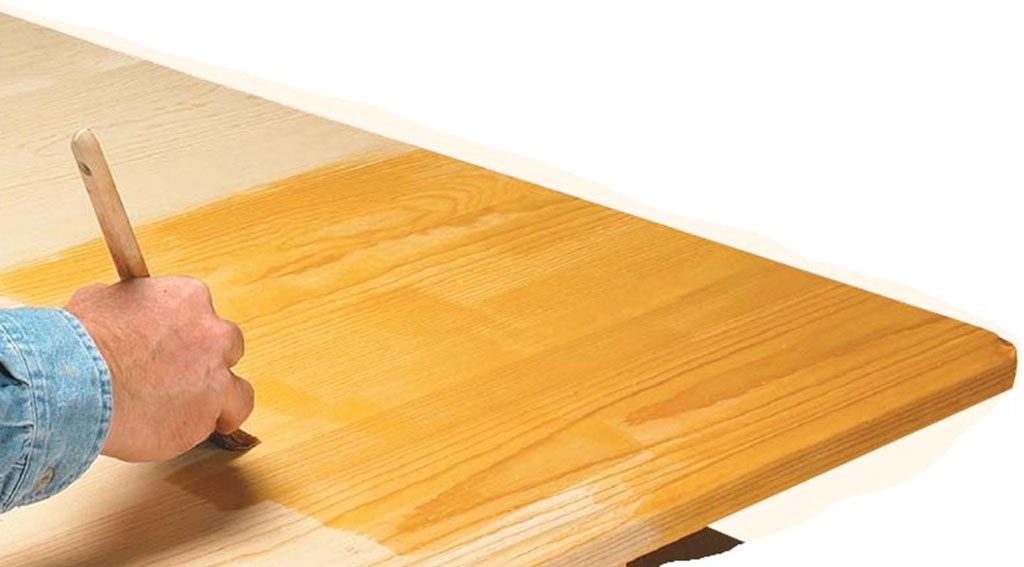
Whether it’s a finish that didn’t turn out as expected or simply one that’s seen too much wear and tear, sometimes it’s best to start over. Of course, the first step in the process is to strip off the old finish down to bare wood. I can tell you from experience that this can be an unpleasant job. But I’ve also found that it’s less tedious when you choose a finish remover that’s geared toward your needs. And it also helps to learn a few tricks of the trade.
THE TWO TYPES. Finish removers actually soften and loosen a finish so that it can be scraped or rubbed off the surface. They fall into two general types depending upon the active ingredients.

The older class that you see above is often referred to as semi-paste finish remover and is based around methylene chloride — a very powerful and volatile solvent. These strippers may also contain a range of other solvents such as mineral spirits, methanol, acetone, and toluene. Consequently, they have a strong odor, and the fumes may be hazardous. They’re also caustic to the skin and can be flammable. So naturally, safety precautions such as adequate ventilation and protection from skin or eye exposure are always in order.
SAFER. A newer group is the socalled “safe” or “green” strippers (photo below). This type has been developed as a more user-friendly alternative to the semi-paste strippers.

Safe strippers use milder, acid-based solvents to soften and lift a finish. They have little odor and in most cases don’t irritate the skin. And they’re non-flammable.
WHAT’S THE TRADE-OFF? As you might expect, the two types offer a trade-off. One important difference is acting time. Semipaste strippers work very fast. Within just a few minutes of applying the stripper, you’ll observe the wrinkling and bubbling that shows the finish is softening. After 10 or 15 minutes, a thin finish can be scraped down to bare wood (upper right photo). Thick, stubborn finishes or paints may require a couple of applications, but the quick acting time still allows this to be done in pretty short order.
One drawback is a limited working time. If you wait too long before starting to scrape, the solvents will evaporate, and the finish will reharden.
A LONGER WAIT. You’ll find that safe strippers work much slower. It can be anywhere from one to several hours (sometimes overnight) before you observe much in the way of film softening.
On the plus side, the thick gel formulation of these strippers allows a leisurely approach. You can apply a coat and leave it for an extended period without worry of it drying out. If you don’t want to be tied to the job, this is a big plus.
WHICH WORKS BETTER?
Both types of strippers claim to be effective on a pretty wide range of finishes, paints, and even epoxy. In general, I’ve found this to be true. And both will even lift wood stains to some degree. But there’s a difference. Due to the milder softening action of the safe types, you may find that multiple applications are required to completely remove a finish. This can stretch out the time frame even further as well as add to the cost.

USING FINISH REMOVERS. Since you’re starting point is a failed finish, it’s hard to go too wrong when using a stripper. Your main goal is to get the job done thoroughly with a minimum amount of work. I’ll offer a few tips.
The process starts by brushing on a thick coat of stripper. When using a semi-paste type, it’s best to work on a limited area, so the stripper won’t dry out before you have a chance to remove it. If the finish is thick and soaks up the stripper, a second coat may help.
Comparing Strippers
Methylene chloride stripper (top photo) will soften a finish in minutes. Gel-type stripper (lower photo) stays active much longer.


Now be patient and let the stripper do its job. Sometimes the softening action is pretty easy to spot — it will wrinkle or blister noticeably. If you’re not sure, test a small spot with a scraper. If the finish doesn’t come off easily, apply more stripper or wait longer for it to soften sufficiently.
SCRAPE OR RUB. Flat surfaces can be carefully scraped with a putty knife. The film will sometimes lift off the surface in a sheet.
Removing finish from molded edges, turnings or recesses requires a different approach. Steel wool or an abrasive pad is my tool of choice for most contoured surfaces. A stiff nylon brush is also a good option. Sometimes it’s just a matter of finding a tool that fits. The key is to be painstakingly thorough.

Once you’re down to bare wood, you want to remove any remaining residue and stripper with a solvent wash. Just wipe the project vigorously with a clean rag wetted in mineral spirits or lacquer thinner. After a round of sanding, your project is ready for a brand new finish.














